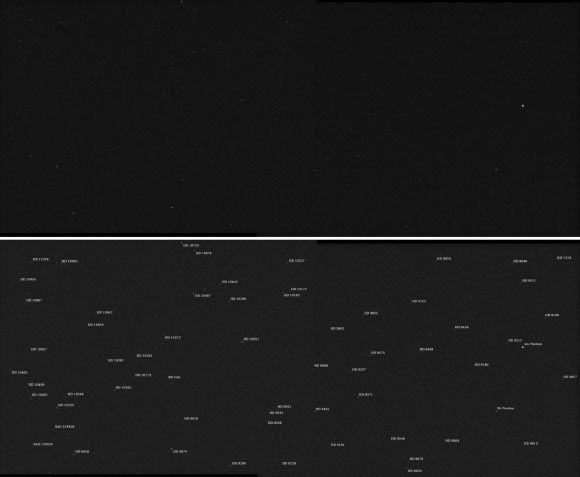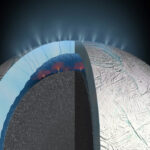Already 26 million km (16 million miles) from Earth, NASA’s Psyche spacecraft will arrive at its target asteroid Psyche in 2029. The Psyche team wanted to test all of the science instruments early in the long journey to make sure they are working as intended, and to ensure there would be plenty of time to calibrate and adjust them as needed. The imager instrument, which consists of a pair of identical cameras, captured a total of 68 images, all within a star field in the constellation of Pisces.
Psyche’s first images make up this mosaic showing a starfield in the constellation of Pisces. Image credit: NASA / JPL-Caltech / ASU.
Psyche is a NASA mission to study a metal-rich asteroid with the same name, located in the main asteroid belt between Mars and Jupiter.
This is NASA’s first mission to study an asteroid that has more metal than rock or ice.
The spacecraft launched October 13, 2023, at 10:19 a.m. EDT aboard a SpaceX Falcon Heavy rocket from Kennedy Space Center.
By August 2029, it will begin exploring the asteroid that scientists think — because of its high metal content — may be the partial core of a planetesimal, a building block of an early planet.
The Psyche imager takes pictures through multiple color filters, all of which were tested in these initial observations.
With the filters, the Psyche team will use photographs in wavelengths of light both visible and invisible to the human eye to help determine the composition of the asteroid.
The imager team will also use the data to create 3D maps of the asteroid to better understand its geology, which will give clues about Psyche’s history.
“These initial images are only a curtain-opener,” said Psyche imager instrument lead Jim Bell, a researcher at Arizona State University.
“For the team that designed and operates this sophisticated instrument, first light is a thrill.”
“We start checking out the cameras with star images like these, then in 2026 we’ll take test images of Mars during the spacecraft’s flyby.”
“And finally, in 2029 we’ll get our most exciting images yet — of our target asteroid Psyche.”
“We look forward to sharing all of these visuals with the public.”
Earlier in the mission, in October, the Psyche team powered on the magnetometer, which will provide crucial data to help determine how the asteroid formed.
Evidence that the asteroid once had a magnetic field would be a strong indication that the body is a partial core of a planetesimal, a building block of an early planet.
The information could help us better understand how our own planet formed.
On November 8, amid all the work with the science instruments, the team fired up two of the four electric propulsion thrusters, setting a record: the first-ever use of Hall-effect thrusters in deep space.
Until now, they’d been used only on spacecraft going as far as lunar orbit.
By expelling charged atoms, or ions, of xenon gas, the ultra-efficient thrusters will propel the spacecraft to the asteroid and help it maneuver in orbit.
Less than a week later, on November 14, the technology demonstration built into the spacecraft, an experiment called Deep Space Optical Communications (DSOC), set its own record.
The experiment achieved first light by sending and receiving optical data from far beyond the Moon.
The instrument beamed a near-infrared laser encoded with test data from nearly 16 million km (10 million miles) away — the farthest-ever demonstration of optical communications.




